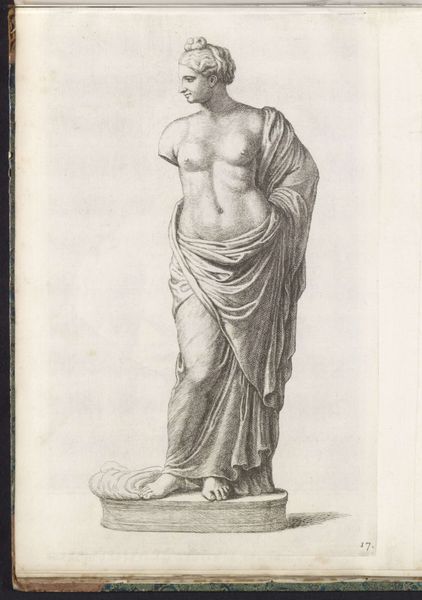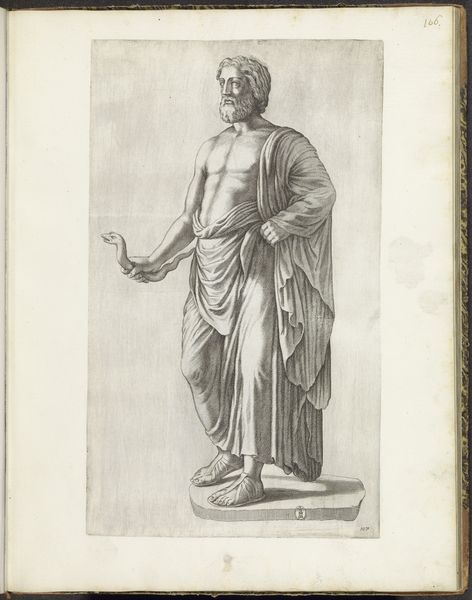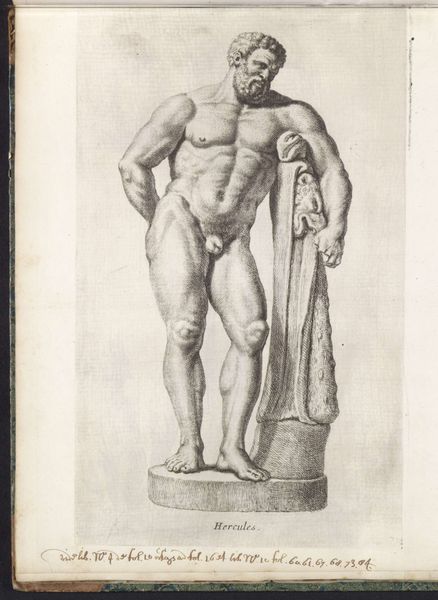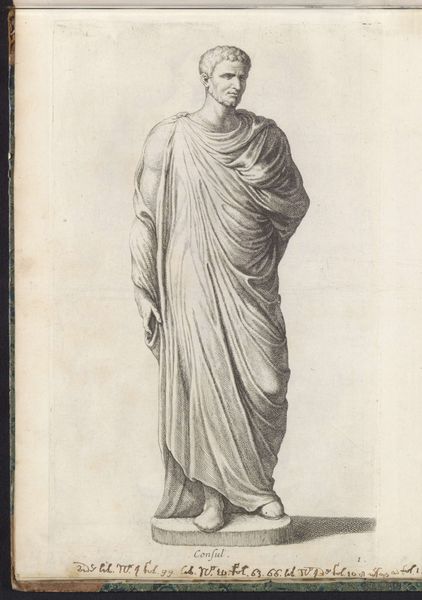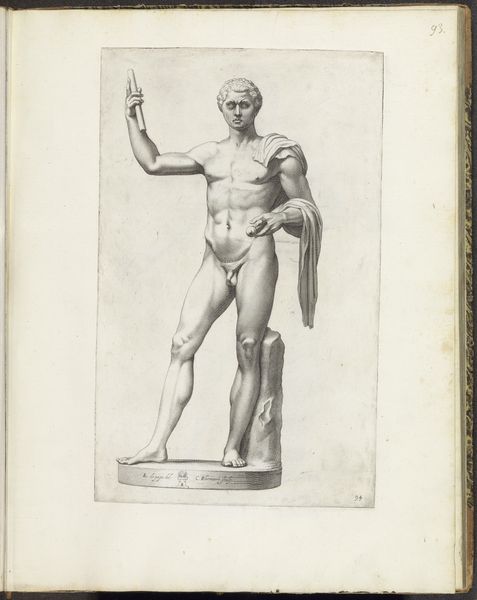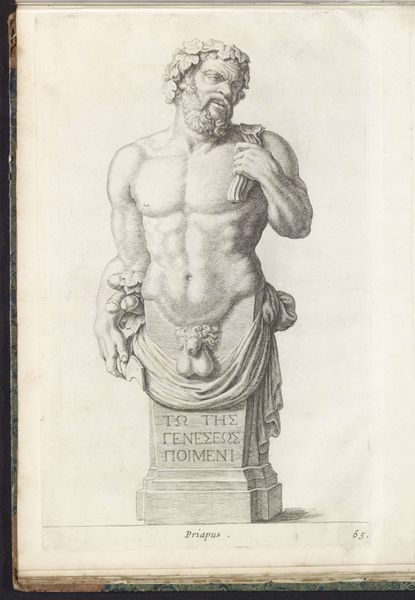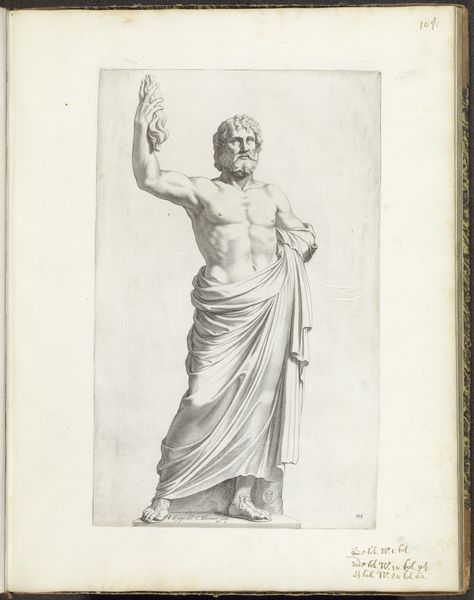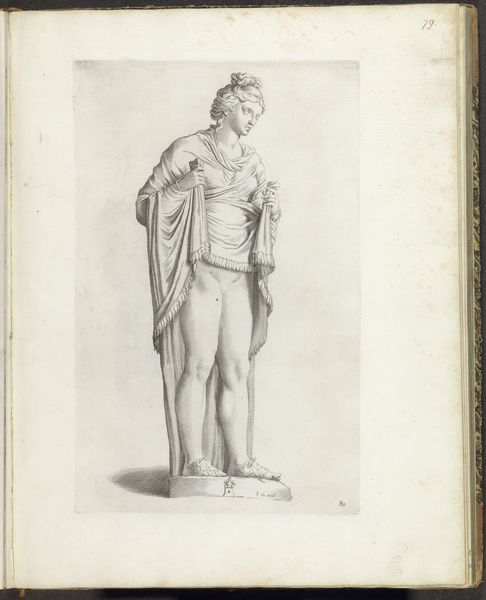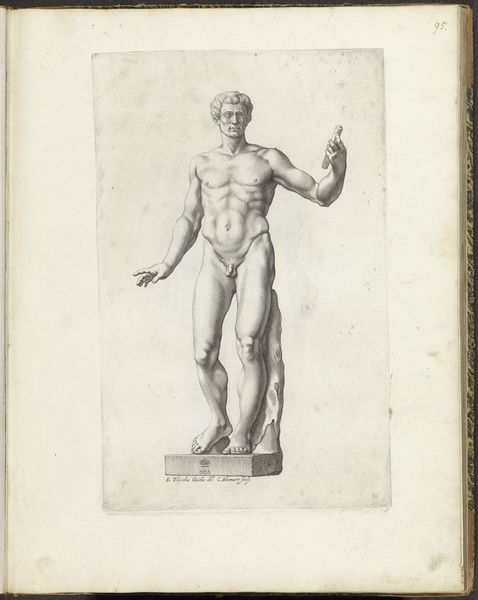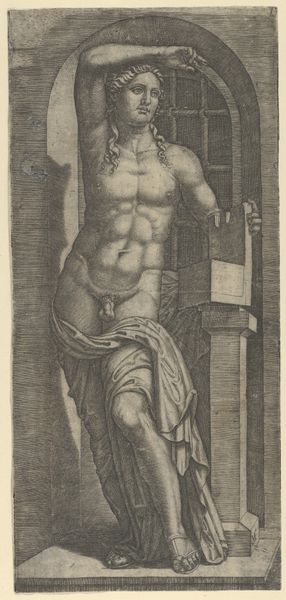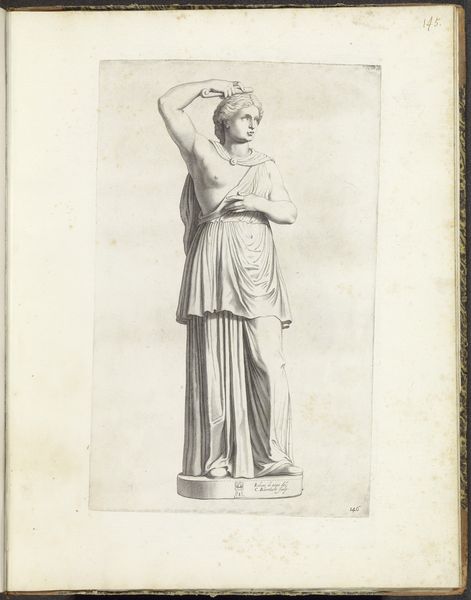
print, sculpture, engraving
#
baroque
# print
#
greek-and-roman-art
#
classical-realism
#
figuration
#
sculpture
#
history-painting
#
nude
#
engraving
Dimensions: height 325 mm, width 201 mm
Copyright: Rijks Museum: Open Domain
Curator: Here we have an engraving of a sculpture by Hubert Quellinus dating back to between 1646 and 1670, currently held in the Rijksmuseum collection. The piece is called "Sculptuur van Asklepios," depicting the Greek god of medicine. Editor: Immediately, I’m struck by the almost melancholic posture and the dramatic lighting—or lack thereof. There’s a weight, a somber tone that radiates from the figure. It gives the sense that it is emerging from history as well as, well, fading. Curator: Well, Asklepios himself embodies the complex relationship between life and death. His symbols—the serpent-entwined staff—became the very emblem of medicine. Notice the almost unsettling serenity on his face, even knowing that he's connected to healing and sometimes, to transitions we’d rather not consider. Editor: The engraver, though working in print, captures that classic baroque dynamic tension—the figure’s static pose against the flowing drapery, and that smooth skin juxtaposed with the sharp, incisive lines. The texture almost breathes with restrained energy, waiting. Curator: Consider, too, the psychological implications of portraying a god. We, today, look upon this figure, a man almost, rendered in human-scale dimensions. In his time, viewers would consider how mortality brushes even divine beings—how gods shape, but are equally molded by fate. Editor: I appreciate how the subtle cross-hatching of the engraving enhances the form’s spatial dimensions, making him seem almost tactile. But at the same time, the stark greyscale tones gives the sculpture—or representation—a sense of unreality. An icon outside time, now captured on the page. Curator: So it is a rendering within a rendering, each adding their perspective and emotional lens. A dialogue between god, sculptor, and artist across centuries to remind us that even time, like health, is transient. Editor: A testament to the layering inherent to looking, and the continuous echo between classical form and human perspective.
Comments
No comments
Be the first to comment and join the conversation on the ultimate creative platform.
